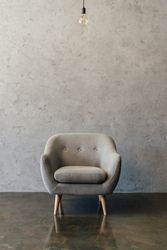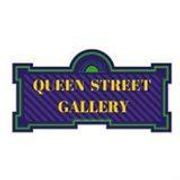An Antique Shop Gives a Brief History of Mid-Century Modern Designs

AMC’s Mad Men might have aired its final season, but the 1960s period drama brought back to life the popularity of “mid-century modern” furniture design. A resurgence that happens every few years, the term, often seen on labels and tags in antique shops, was coined by writer and art historian Cara Greenberg in her 1984 book “Mid-Century Modern.”
During the style’s domination from the 1940s to 1960s, Eames, Bertoia, and Saarinen were well-known designers who dominated the furniture design scene. This style was known for its functionality, elegance, and simplicity, with the use of clean lines that give pieces a timeless look.
Modernism gave birth to the mid-century style in the 1940s, with acclaimed designer George Nelson’s 1946 Platform Bench heralded as the first of its kind. This piece of furniture was designed to be mass produced as a living room staple in every home.
In a time where wood and marble dominated interior design as the materials of choice, furniture creators embraced new textures such as glass, metal, and plywood. These artificial materials were often married with wood to strike a simple yet powerful contrast in the home.
 The most notable material introduction was the use of plastic in furniture design. The artificial substance, which was once considered to be cheap and industrial, began popping up in contemporary design showrooms. The trend was to create visual interest through the use of only two contrasting features.
The most notable material introduction was the use of plastic in furniture design. The artificial substance, which was once considered to be cheap and industrial, began popping up in contemporary design showrooms. The trend was to create visual interest through the use of only two contrasting features.
Coveted pieces such as manufacturer Henry Miller’s Molded Plastic and Fiberglass Armchair used plastic that was available in elegant colors like “elephant greige” and “parchment” and juxtaposed with metal or wood rocker bases.
Furniture during this era often took on the label of either biomorphic or machine. Biomorphic pieces mimicked natural shapes by combining human form with functionality, with chairs and benches like Eames’s Plastic Chaise Lounge featuring curved seats. The machine look was a futuristic one that featured intergalactic geometric forms that surged in popularity during the country’s race to the moon.
Maybe it’s the antique shop’s location in the historic district of downtown Martinsburg, WV, but Queen Street Gallery has a way of transporting you to another time the moment you walk through the door. Located in the area for more than 20 years, this antique shop houses an impressive collection of antique prints, sculptures, and paintings that will perfectly complement your home’s mid-century modern design. Go online to view their shop inventory, or call (304) 263-9495 to inquire about a specific piece.
About the Business
Have a question? Ask the experts!
Send your question

